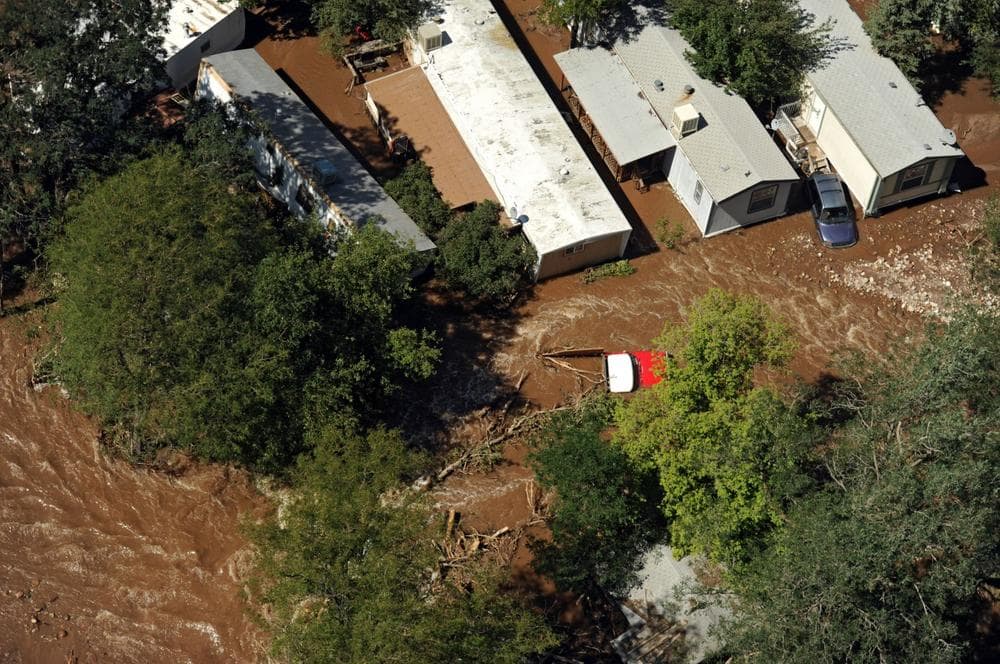Advertisement
Extreme Weather, Extreme Consequences In Colorado
ResumeThe aftermath of Colorado’s devastating mountain flooding, and the towering cost of extreme weather.

The images from Colorado of the storm and its aftermath are devastating. Houses torn apart. Roads strewn with debris. Families displaced. When the rain kept coming last week, it flowed into streams and rivers, which swelled and raged, taking everything along its banks with it. Now the recovery has begun. And now the questions. What just happened and why? This hour, On Point: the science of Colorado’s flash floods.
Guests
Lesley McClurg, reporter for Colorado Public Radio and producer of the local show, Colorado Matters. (@LesleyWMcClurg)
Matt Kelsch, hydrometeorologist at the University Corporation for Atmospheric Research. (@AtmosNews)
Sue Minter, Deputy Secretary at the Vermont Agency of Transportation, former Vermont State Representative, head of Vermont's Hurricane Irene recovery office.
Martin Hoerling, research meteorologist at the National Oceanic and Atmospheric Administration's Earth System Research Laboratory in Boulder, Colorado.
From The Reading List
TIME: The Science Behind Colorado's Thousand-Year Flood — "Parts of Boulder are experiencing a 1-in-1,000 year flood. That doesn’t literally mean that the kind of rainfall seen over the past week only occurs once in a millennium. Rather, it means that a flood of this magnitude only has a 0.1% chance of happening in a given year. This is historically bad luck, due in part to the combination of an active, drenching Southwest monsoon and a low pressure area that trapped over the region. A tropical air mass—unusual in the dry Rocky Mountains—is slowly being hauled across the Front Range by weak southwesterly winds. This is known as an orographic lift, which is converting the incredibly moist air into sheets and sheets of rainfall."
National Geographic: Amid Drought, Explaining Colorado's Extreme Floods — "Sandra Postel, National Geographic’s Freshwater Fellow, said that the long-term drought that has parched the area and gripped much of the Colorado River Basin over the past 14 years may be partly to blame for the severity of the floods. Drought tends to harden the soil, she said. When rains do come, less of the water can absorb into the ground, so it quickly runs off the land. Similarly, fires can lead to worse flooding, because they remove vegetation that can slow down and trap rainfall, Postel said. (See “Fire and Rain: The One-Two Punch of Flooding After Blazes.”) In 2012, the Boulder area was afflicted by the Flagstaff Fire. In 2010, the Fourmile Canyon fire caused damage to Boulder County worth $217 million."
New York Times: A Soaked Vermont Awaits Even More Flooding — "The ferocity of the flooding appeared to take many here by surprise. In Saxtons River, a village of 600 in southern Vermont on a river of the same name, John Bohannon, 68, said he had helped employees from the local grocery store pack food into a truck because the place was flooding. 'In the past 25 years, I have never seen anything like this,” he said. “We’ve had a lot of snow and power outages because of this, but never this bad.'"
This program aired on September 19, 2013.